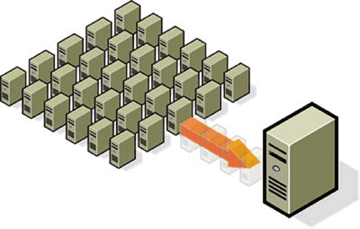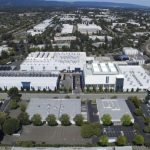The Time Is Ripe for Data Center Consolidation
During the past 10 to 15 years, multinational organizations amassed dozens of data centers around the world to support business growth and IT demand. Mergers and acquisitions, regional and federated data center ownership models, and regulatory requirements mandating certain data remain in-country have all contributed to complex, sprawling data center real estate assets at many companies.

Now those companies are stuck with legacy infrastructure, hundreds if not thousands of servers and application platforms, and high fixed costs. Given that the average annual cost to operate a single data center runs between $10 million and $25 million, and that some large companies may run up to 60 of them, the average annual cost of data center operations can easily exceed $500 million.
In the financial services industry, several tier one banks are coping with data center sprawl by embarking on billion dollar programs aimed at dramatically reducing their footprints. Their actions include shutting down older facilities, standardizing hardware, rationalizing applications, and modernizing them to run in the cloud or on shared infrastructures. Some large companies in other industries are undertaking similar initiatives: A transportation equipment manufacturer wants to consolidate more than 40 data centers down to five, while a global media company hopes to save more than $100 million by shutting down nearly 60 data centers.
We have seen these “spend-to-save” data center programs cost anywhere from $500 million to $1 billion over multiple years. They’re often mandated by corporate boards and driven by a need to reduce annual IT operating expenses in order to reinvest those funds in other parts of the business. The other goal of these programs is to transform monolithic data center estates into more nimble, scalable infrastructure services that allow IT organizations to react more quickly to business needs, whether for new products or services, or compressed time to market.
CIOs & CTOs initiating these data center consolidation programs are taking advantage of a number of factors, including the maturity of cloud technology, increasing options for turning fixed costs into variable costs, and the ability to “pay by the drink” for infrastructure and applications.
CIOs who are thinking ahead two to three years don’t want to be saddled with legacy infrastructure or investments they can’t redirect. Data center consolidation and application modernization allow them to essentially ‘future-proof’ their technology footprints.
Plan the Undertaking
Obviously, a massive data center consolidation and application modernization effort is no small task. With that in mind, it is good to consider the following:
Survey your current data center estate. Take stock of data center assets and identify the total cost to run your data centers. Consider the cost of hardware, software, disaster recovery, networking, power, real estate, taxes, and labor at each site. And as you tally the number of distinct servers and application platforms, look for opportunities to standardize and rationalize.
Assess your objectives. Why are you undertaking such an initiative? To reduce cost and complexity? Free up capital? Improve IT responsiveness? Has the board given you a number by which you need to reduce IT costs? Clarifying your objectives can help you identify areas to target.
Envision the end state. Gather requirements from stakeholders and then—with financial and strategic goals in mind—either determine what it will take to reduce costs by the target amount (if you’ve been given a specific goal), or calculate potential savings gleaned from shutting down facilities, standardization, and virtualization. Aim to develop a target state data center strategy that addresses business requirements for service levels, security, and regulatory compliance, while driving toward enhanced technology innovation, greater cost efficiency, and increased agility.
Think long-term and big picture. To the extent possible, take a three- to five-year view of business needs and the technology landscape as you plan a new data center strategy. Focus on core architectural principals rather than specific technologies and vendors. Paying too much attention to specific products may limit your ability to adapt your data center strategy as technology evolves.



